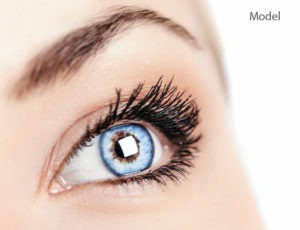 Are you experiencing vision problems due to droopy eyelids? Eyelid surgery, also known as blepharoplasty, may be the solution you’ve been looking for. This cosmetic procedure can not only enhance the appearance of your eyelids but also improve your vision. Let’s dive into the details of how eyelid surgery can help address vision issues. Khan Eyelid and Facial Aesthetics, led by oculoplastic and reconstructive surgeon Dr. Tanya Khan, provides eyelid surgery to patients in Plano, Dallas, Austin, Texas, and surrounding locations.
Are you experiencing vision problems due to droopy eyelids? Eyelid surgery, also known as blepharoplasty, may be the solution you’ve been looking for. This cosmetic procedure can not only enhance the appearance of your eyelids but also improve your vision. Let’s dive into the details of how eyelid surgery can help address vision issues. Khan Eyelid and Facial Aesthetics, led by oculoplastic and reconstructive surgeon Dr. Tanya Khan, provides eyelid surgery to patients in Plano, Dallas, Austin, Texas, and surrounding locations.
Understanding Eyelid Surgery and Its Purpose
Eyelid surgery, or blepharoplasty, is a specialized medical intervention designed primarily to remove surplus skin and fat from around the eyelids. This operation aims to grant patients a refreshed and more youthful look. However, beyond its cosmetic appeal, eyelid surgery holds significant functional value for many. One of the key benefits is the improvement of vision for individuals suffering from droopy eyelids, a condition medically referred to as ptosis. Ptosis can lead to a reduction in the field of vision, making daily tasks difficult and sometimes causing additional symptoms such as eye strain or headaches.
By meticulously eliminating the excessive skin and possibly tightening the muscles around the eyelids, this procedure can substantially lift the eyelids out of the patient’s line of sight, thereby enhancing visual acuity and comfort. This dual-purpose nature of eyelid surgery makes it a compelling option not only for those looking to rejuvenate their appearance but also for individuals seeking a solution to the practical challenges posed by sagging eyelids.
The significance of understanding both the cosmetic and functional outcomes of eyelid surgery cannot be overstated. For patients, knowing that the procedure can address visual impairments caused by ptosis, while simultaneously improving the aesthetic appearance of the eyes, offers a comprehensive solution. This broadens the scope of eyelid surgery, presenting it as a viable option for a wider range of individuals who might benefit from its results.
How Droopy Eyelids Impair Vision
Droopy eyelids, medically termed ptosis, pose significant challenges to one’s visual capabilities. When the upper eyelid falls to a lower position than normal, it can encroach upon the upper part of the visual field, thereby restricting one’s ability to see clearly. This obstruction is particularly problematic for tasks that require unimpeded upward or straight-ahead vision, such as driving or reading, making these activities strenuous and sometimes unsafe. The diminished field of view forces sufferers to tilt their heads back or lift their eyelids with their fingers in an attempt to see better, which can lead to neck pain or further eye strain.
Moreover, ptosis is not merely an inconvenience; it can escalate into more severe vision-related problems. For example, the effort to compensate for the reduced vision can cause individuals to strain their eyes excessively, leading to discomfort, headaches, and fatigue. This constant strain not only affects the eyes’ health but can also impact one’s overall quality of life, contributing to irritability and decreased productivity. In severe cases, the significant reduction in vision can lead to a dependency on others for tasks that require sharp vision, further diminishing an individual’s independence.
Addressing droopy eyelids through eyelid surgery can mitigate these issues, removing the physical barrier to clear vision and alleviating the need for compensatory actions that lead to discomfort and additional health concerns. This restoration of the visual field is crucial for performing daily tasks efficiently and safely, marking a significant step towards improving one’s quality of life and well-being.
Eyelid Surgery: The Procedure Explained
Eyelid surgery, or blepharoplasty, involves precise surgical techniques to address issues related to the eyelids. Surgeons initiate the procedure by carefully marking the areas around the eyelids where excess skin and fat will be removed. These markings are essential for ensuring that the natural contour of the eye is preserved and that the scars are as inconspicuous as possible.
Incisions are then made along these pre-marked lines, typically within the natural folds of the eyelid to minimize visible scarring. Through these incisions, the surgeon meticulously removes or repositions fat deposits, trims away excess skin, and may tighten the muscles to correct droopiness. Special attention is paid to the symmetry and natural appearance of the eyelids during this process.
The procedure can be performed under local anesthesia with sedation or general anesthesia, depending on the complexity of the surgery and the patient’s comfort level. The choice of anesthesia will be discussed during pre-operative consultations. The entire surgery usually lasts for one to three hours, depending on whether both upper and lower eyelids are addressed.
After the procedure, sutures or skin glue is applied to close the incisions. In some cases, self-absorbing sutures are used, which do not require removal. Following the surgery, patients receive specific aftercare instructions to manage swelling, bruising, and discomfort during the recovery phase. These instructions include guidance on keeping the head elevated, using cold compresses, and managing pain with prescribed medications. Patients can often resume normal activities and return to work within a week or two, although complete healing and the full effects of the surgery may take several weeks to manifest.
The Connection Between Eyelid Surgery and Improved Vision
The transformative effect of eyelid surgery on vision is both profound and multifaceted. When droopy eyelids are corrected, the immediate result is a broader, unobstructed field of vision. Patients often report a marked improvement in activities that were previously challenging, such as driving, reading, and using computers. The lifting of the eyelids not only enhances visual range but also reduces the chronic eye strain and fatigue associated with ptosis. This relief from constant strain can lead to fewer headaches and a more comfortable visual experience overall.
Moreover, the correction of droopy eyelids through blepharoplasty can lead to improved eye health. By eliminating the necessity for patients to adjust their viewing angles unnaturally to see better, the surgery helps in maintaining a healthier posture, thereby minimizing neck and shoulder discomfort. Additionally, the reduction in eye strain can decrease the likelihood of developing more serious ocular conditions associated with overexertion of the eyes.
This procedure, therefore, stands out not only as a method to reclaim lost visual function but also as a preventive measure against further vision degradation. By addressing the physical impediment to clear sight, eyelid surgery provides a direct pathway to enhanced visual performance and comfort. This link between functional improvement and aesthetic enhancement underscores the comprehensive benefits of eyelid surgery, emphasizing its role not merely as a cosmetic intervention but as a crucial step towards achieving optimal visual health.
Who is a Good Candidate for Eyelid Surgery?
Ideal candidates for eyelid surgery include those experiencing significant interference with their vision due to the sagging or drooping of the eyelids. This condition, often resulting from aging, genetics, or certain medical conditions, can lead to a decreased field of vision and difficulty in performing everyday activities such as reading and driving. Candidates should exhibit physical signs of ptosis where the upper eyelid droops to a degree that impairs vision or causes considerable eye strain and discomfort.
In addition to dealing with functional impairments, candidates may seek to address aesthetic concerns that accompany droopy eyelids, aiming for a more youthful and refreshed appearance. However, it is crucial for individuals considering this procedure to have a clear understanding of what the surgery can realistically achieve. They should possess a positive outlook and specific, but reasonable, goals in mind for the improvement of their appearance and vision.
A thorough evaluation by a qualified plastic surgeon is imperative to determine candidacy for eyelid surgery. This assessment will include a detailed medical history, an examination of the eyelid structure, and possibly vision tests to ascertain how significantly the drooping eyelids impact the individual’s sight. Patients with certain medical conditions that could affect healing or those with serious eye conditions may need further evaluation to ensure that eyelid surgery is a safe and viable option for them.
Ultimately, individuals considering eyelid surgery should be in good general health, non-smokers, or willing to quit smoking well in advance of the surgery, as smoking can complicate both the procedure and the healing process. Having realistic expectations and a clear understanding of the potential risks and benefits of eyelid surgery is also essential for anyone contemplating this procedure.
What to Consider Before Opting for Eyelid Surgery
Selecting a qualified and board-certified surgeon with expertise in eyelid procedures is paramount. During your consultation, openly discuss what you hope to achieve with the surgery to ensure your expectations are in line with achievable outcomes. Understanding the recovery timeline is crucial; adherence to post-surgical care instructions significantly influences the success of the procedure. Familiarize yourself with the potential risks and how they apply to your specific situation. Also, consider the logistical aspects such as the need for assistance during the initial recovery period and any adjustments to your daily routine. Being well-informed and prepared will help ensure a smoother process and more satisfactory results.
CONTACT Khan Eyelid and Facial Aesthetics AND OCULOPLASTIC & RECONSTRUCTIVE SURGEON DR. TANYA KHAN TODAY TO SCHEDULE AN APPOINTMENT
For more information about procedures and treatments at Khan Eyelid and Facial Aesthetics by Ophthalmic surgeon Dr. Tanya Khan. Click here to contact us.
Taking patients from in and around Dallas, Plano, Fort Worth, Grapevine, Garland, Mesquite, Carrollton, Irving, Frisco, Texas and more.


 Eyelid surgery, also known as blepharoplasty, is a cosmetic procedure that can rejuvenate the appearance of the eyes by removing excess skin, fat, and muscle from the eyelids. This surgery can address concerns such as droopy eyelids, puffiness, and under-eye bags, resulting in a more youthful and refreshed look. Many individuals undergo eyelid surgery to enhance their overall facial appearance and boost their self-confidence. If you are considering eyelid surgery, it’s essential to understand the timeline of results and what to expect during the recovery process. Khan Eyelid and Facial Aesthetics, led by oculoplastic and reconstructive surgeon
Eyelid surgery, also known as blepharoplasty, is a cosmetic procedure that can rejuvenate the appearance of the eyes by removing excess skin, fat, and muscle from the eyelids. This surgery can address concerns such as droopy eyelids, puffiness, and under-eye bags, resulting in a more youthful and refreshed look. Many individuals undergo eyelid surgery to enhance their overall facial appearance and boost their self-confidence. If you are considering eyelid surgery, it’s essential to understand the timeline of results and what to expect during the recovery process. Khan Eyelid and Facial Aesthetics, led by oculoplastic and reconstructive surgeon






Schedule a Consultation: 972-EYE-LIDS (393-5437)